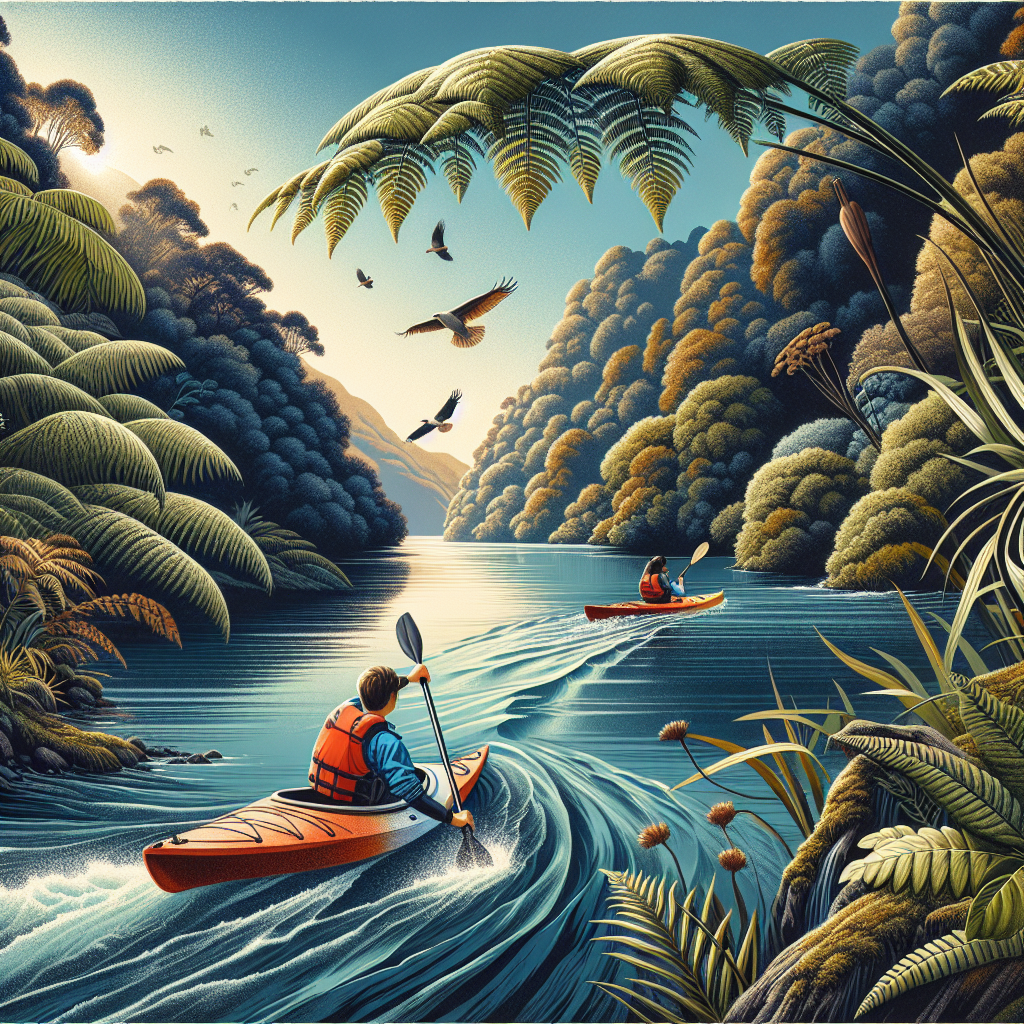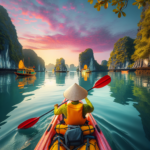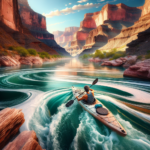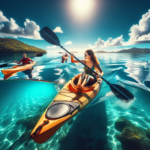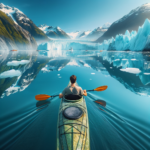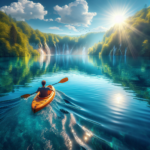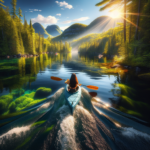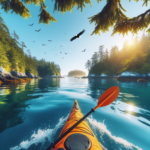Kayaking in Whanganui River, New Zealand
Introduction to Kayaking
Kayaking is an exhilarating outdoor activity that has gained immense popularity worldwide. It offers a unique way to explore nature, combining physical exercise with the thrill of navigating through water. Whether you’re paddling through serene lakes, challenging river rapids, or along coastal shores, kayaking provides an intimate connection with the environment. The sport is accessible to people of all skill levels, making it a favorite pastime for both adventure seekers and those looking to enjoy a peaceful day on the water.
In this article, we will spotlight the unique features of kayaking in Whanganui River, New Zealand. This destination is renowned for its stunning landscapes, rich cultural history, and diverse kayaking experiences. From tranquil stretches to more challenging rapids, Whanganui River offers something for everyone. We’ll delve into the specifics of what makes this river a fantastic destination for kayaking enthusiasts.
Kayaking in Whanganui River, New Zealand, is not just about the sport itself; it’s about immersing yourself in a unique environment. The river is steeped in history and cultural significance, offering a kayaking experience that is both thrilling and enriching. Whether you’re a seasoned kayaker or a beginner, Whanganui River promises an unforgettable adventure.
Overview of Kayaking in Whanganui River, New Zealand
Whanganui River, located on the North Island of New Zealand, is the country’s third-longest river, stretching over 290 kilometers. The river flows from the central plateau of the North Island to the Tasman Sea, passing through lush forests, deep gorges, and serene farmlands. The geography of the river makes it an ideal location for kayaking, offering a variety of landscapes and water conditions.
The climate in the Whanganui River region is temperate, with mild summers and cool winters. This makes it possible to kayak almost year-round, although the best times to visit are during the warmer months from November to April. The river has a rich cultural history, particularly for the Māori people, who have lived along its banks for centuries. The Whanganui River is considered a living entity with its own legal rights, reflecting its deep cultural and spiritual significance.
Visitors can access the Whanganui River from several points, with the town of Whanganui being a popular starting point. The river is well-connected by road, and there are various services available for kayak rentals and guided tours. Whether you’re planning a day trip or a multi-day adventure, the Whanganui River is easily accessible and offers a range of options to suit different preferences and skill levels.
Overall, kayaking in Whanganui River, New Zealand, is a unique experience that combines natural beauty, cultural heritage, and thrilling water adventures. The river’s diverse landscapes and rich history make it a must-visit destination for kayaking enthusiasts from around the world.
Kayaking Conditions in Whanganui River, New Zealand
The Whanganui River offers a variety of water conditions that cater to different kayaking experiences. The upper reaches of the river are characterized by gentle flows and calm waters, making them ideal for beginners and those looking for a more relaxed kayaking experience. As you move downstream, the river’s conditions become more challenging, with sections of rapids that provide an adrenaline rush for more experienced kayakers.
The weather conditions in the Whanganui River region are generally favorable for kayaking. Summers are warm and pleasant, with temperatures ranging from 20 to 25 degrees Celsius. Winters are cooler, with temperatures averaging around 10 degrees Celsius. Rainfall is fairly evenly distributed throughout the year, but the river levels can rise significantly after heavy rains, affecting the water conditions and making some sections more challenging to navigate.
Tides and water currents are important factors to consider when kayaking in the Whanganui River. While the river is not tidal, its flow can be influenced by rainfall and seasonal changes. During periods of high rainfall, the river’s flow can become faster and more turbulent, creating exciting conditions for experienced kayakers. Conversely, during dry spells, the river’s flow may slow down, making it easier for beginners to paddle.
Environmental factors such as water temperature and visibility also play a role in the kayaking experience. The water temperature in the Whanganui River is generally cool, so wearing appropriate gear such as wetsuits is recommended, especially during the cooler months. Visibility in the water is usually good, allowing kayakers to enjoy the underwater scenery and spot fish and other aquatic life.
Top Spots for Kayaking in Whanganui River, New Zealand
One of the top spots for kayaking on the Whanganui River is the section between Taumarunui and Pipiriki. This stretch is known for its stunning scenery, including lush native forests, dramatic gorges, and historic sites. The journey typically takes three to five days, making it a popular choice for multi-day kayaking trips. The best time to kayak this section is during the summer months when the weather is warm and the river conditions are favorable.
Another popular spot is the Whanganui National Park, which offers a range of kayaking experiences from gentle paddles to more challenging rapids. The park is home to diverse wildlife, including native birds and fish, making it a great destination for nature enthusiasts. The best time to visit the national park for kayaking is during the spring and summer months when the weather is mild and the river levels are stable.
The lower reaches of the Whanganui River, near the town of Whanganui, are also worth exploring. This section of the river is more accessible and offers a variety of kayaking experiences, from leisurely paddles to more challenging sections with small rapids. The area is rich in history and culture, with several historic sites and landmarks along the riverbanks. The best time to kayak this section is during the warmer months from November to April.
For those looking for a more adventurous experience, the Mangapurua Stream, a tributary of the Whanganui River, offers a challenging kayaking route with stunning scenery and exciting rapids. This section is recommended for experienced kayakers due to its more demanding conditions. The best time to kayak the Mangapurua Stream is during the summer months when the water levels are higher and the weather is more predictable.
Safety and Regulations
When kayaking in Whanganui River, New Zealand, it’s essential to adhere to local safety regulations and guidelines. The river can present various challenges, from changing water levels to unexpected rapids, so being prepared is crucial. Always check the weather forecast and river conditions before setting out, and inform someone of your plans and expected return time.
Wearing appropriate safety gear is a must. This includes a well-fitted life jacket, helmet, and suitable clothing for the water temperature. A wetsuit or drysuit may be necessary during cooler months. Additionally, carrying a first aid kit, a whistle, and a waterproof map of the river can be invaluable in case of emergencies.
It’s also important to be aware of the local regulations regarding kayaking on the Whanganui River. Some sections of the river may require permits, especially if you’re planning a multi-day trip. There are also designated camping sites along the river where you can set up camp for the night. Make sure to follow the Leave No Trace principles to minimize your impact on the environment.
In case of an emergency while kayaking, it’s essential to know how to handle the situation. If you capsize, stay with your kayak and try to get back in if possible. If you’re unable to re-enter your kayak, use it as a flotation device and signal for help. Always paddle with a buddy or in a group, as this increases safety and ensures that help is available if needed.
Amenities and Accommodations
There are several amenities available for kayakers on the Whanganui River. Kayak rental facilities are located in key towns such as Whanganui and Taumarunui, offering a range of equipment from single kayaks to tandem options. Many rental services also provide safety gear and maps, ensuring you have everything you need for a safe and enjoyable trip.
Guided tours are another excellent option for those new to kayaking or unfamiliar with the Whanganui River. Experienced guides can provide valuable insights into the river’s history, culture, and natural features while ensuring your safety. These tours often include equipment rental, meals, and accommodation, making them a convenient choice for visitors.
Accommodation options along the Whanganui River range from basic camping sites to more comfortable lodges and hotels. For those looking to immerse themselves in nature, there are several designated camping sites along the riverbanks where you can set up camp for the night. These sites often have basic facilities such as toilets and water supply.
If you prefer more comfort, there are several lodges and hotels in the nearby towns of Whanganui and Taumarunui. These accommodations offer a range of amenities, including hot showers, comfortable beds, and dining options. Some lodges also provide shuttle services to and from the river, making it easy to plan your kayaking adventure.
Environmental Considerations
Preserving the natural habitats and wildlife of the Whanganui River is of utmost importance. As kayakers, it’s essential to practice eco-friendly habits to minimize your impact on the environment. Always follow the Leave No Trace principles, which include packing out all trash, minimizing campfire impact, and respecting wildlife.
When kayaking, avoid disturbing the natural habitats of animals and plants. Keep a safe distance from wildlife and refrain from feeding them. Stick to designated paths and camping sites to prevent damage to the surrounding vegetation. Using biodegradable soap and minimizing the use of chemicals can also help protect the river’s ecosystem.
There are several local conservation efforts and projects that visitors can support. These initiatives aim to preserve the natural beauty and biodiversity of the Whanganui River. Participating in river clean-up events or donating to local conservation organizations are great ways to contribute to these efforts.
By practicing responsible kayaking and supporting conservation efforts, you can help ensure that the Whanganui River remains a pristine and beautiful destination for future generations to enjoy. Your actions can make a significant difference in preserving this unique and valuable natural resource.
Highlights
When comparing kayaking in Whanganui River, New Zealand, with other popular kayaking locations, several unique features stand out. The river’s rich cultural history and significance to the Māori people add a unique dimension to the kayaking experience. The legal recognition of the river as a living entity highlights its importance and the need for its preservation.
The biodiversity of the Whanganui River is another highlight. The river is home to a variety of native fish species, birds, and other wildlife. The surrounding forests and landscapes provide a stunning backdrop for kayaking, with opportunities to spot rare and unique species along the way.
Geographically, the Whanganui River offers a diverse range of landscapes, from serene stretches of calm water to challenging rapids and deep gorges. This variety makes it an ideal destination for kayakers of all skill levels, offering different experiences depending on the section of the river you choose to explore.
Historically, the Whanganui River has played a significant role in the lives of the local Māori people. The river is considered a taonga (treasure) and has been a vital source of food, transport, and spiritual connection for centuries. This deep cultural connection adds a unique and enriching element to the kayaking experience on the Whanganui River.
FAQ Section
- What is the best season to go kayaking on the Whanganui River? The best season to go kayaking on the Whanganui River is during the warmer months from November to April.
- Are there beginner-friendly spots for kayaking on the Whanganui River? Yes, the upper reaches of the river offer gentle flows and calm waters, making them ideal for beginners.
- What should I bring for a kayaking trip on the Whanganui River? Essential items include a well-fitted life jacket, helmet, suitable clothing for the water temperature, a first aid kit, a whistle, and a waterproof map.
- Are kayak rentals available on the Whanganui River? Yes, there are several kayak rental facilities in key towns such as Whanganui and Taumarunui.
- How can I participate in local conservation efforts? You can participate in river clean-up events or donate to local conservation organizations.
- Are guided kayaking tours available? Yes, guided tours are available and often include equipment rental, meals, and accommodation.
- What safety measures are in place for kayaking on the Whanganui River? Safety measures include wearing appropriate safety gear, checking weather and river conditions, and informing someone of your plans.
Final Thoughts
Kayaking in Whanganui River, New Zealand, is a premier destination for kayaking enthusiasts. The river’s diverse landscapes, rich cultural history, and unique biodiversity make it an unforgettable experience. Whether you’re a seasoned kayaker or a beginner, the Whanganui River offers something for everyone.
It’s important to respect local guidelines and conservation efforts to preserve the natural beauty and cultural significance of the river. By practicing responsible kayaking and supporting local conservation initiatives, you can help ensure that the Whanganui River remains a pristine and beautiful destination for future generations.
In conclusion, kayaking in Whanganui River, New Zealand, is an adventure that combines thrill, beauty, and cultural enrichment. We invite you to explore this unique destination and experience the magic of kayaking on one of New Zealand’s most iconic rivers.

